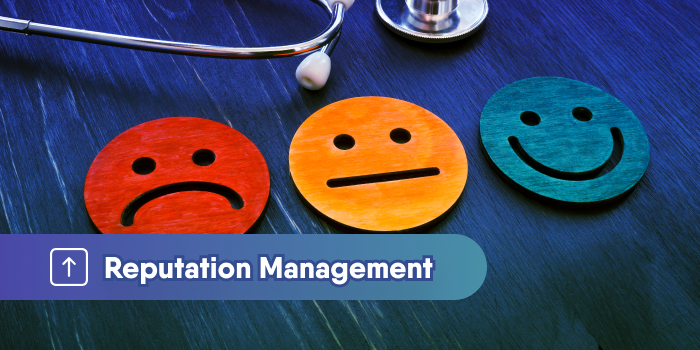5 Ways to Improve Your HCAHPS Score
HCAHPS surveys measure your patients' perspectives of their care experience with hospitals. We offer five ways to improve your HCAHPS score.

Physicians and other healthcare providers have always been concerned with the well-being of their patients. While satisfaction contributes to patient well-being, it wasn’t until 2002, when the Centers for Medicare & Medicaid (CMS) and the Agency for Healthcare Research and Quality (AHRQ) introduced the Hospital Consumer Assessment of Healthcare Providers and Systems (HCAHPS) survey, that patient satisfaction emerged as a critical success metric.
Today, patient satisfaction levels impact the future success of your practice, medical group, or hospital system. Therefore, it’s critical to take the necessary steps to enhance patient satisfaction and reap the many benefits.
Earning and maintaining high patient satisfaction scores benefits your medical organization and your patients in several ways.
American patients have more choices regarding their healthcare than ever before. Satisfied patients are more likely to be loyal patients. This not only means that they’ll schedule the necessary checkups, follow-ups, and other necessary appointments, but they’re more likely to keep them.
Satisfied patients are also excellent ambassadors for you. They tell their friends and family about good experiences as well as bad ones with their friends and family. Would you rather have your patients recommend you when a contact casually mentions that they’re looking for a primary care or specialty provider or have them regale their friends with horror stories at dinner parties?
Satisfied patients ultimately lead to increased profits for your practice or group in several ways. First, satisfied patients show up for their appointments, which means that you don’t lose money on dead hours during the day. Second, they also provide excellent reviews and patient satisfaction survey results, leading to new patient acquisition and improved insurance reimbursement.
Data backs these claims up. According to HCAHP data analysis from the CIT Group, top-performing hospitals’ margins and revenues grow at above-average rates.
Medicare reimbursements are partially tied to patient satisfaction metrics from the HCAHPS survey. When hospitals have poor survey results, it could lead to forfeiting some reimbursements. Around 30% of the 1% of Medicare payments withheld by CMS are linked to HCAHPS results.
Creating a patient-focused culture doesn’t have to come at the expense of employee satisfaction. In fact, taking steps to involve and motivate your staff is a critical part of delivering outstanding patient care.
Healthcare settings are often high-stress environments. Training and empowering your employees enables them to perform their jobs to the best of their abilities and makes them feel valued, and increases staff retention. Experienced staff who know your patients can deliver attentive, patient-focused service, helping to boost your patient satisfaction scores.
Investing in training and software to improve the patient experience can also increase staff and provider productivity in your organization. For example, if you implement secure online appointment scheduling and patient messaging, your staff may spend as much as 50% less time on the phone with patients. As a result, they can perform additional tasks, allowing you to run a leaner office.
Additionally, when you reduce your patient no-show and late cancellations, you have less dead time in your schedule and can maximize your patient time and related billing.
Satisfied patients can enhance your reputation in several ways. First, HCAHPS scores are public, specifically so people can learn about the physicians they can see and make an informed choice about their health care. Second, positive scores make you and your organization much more attractive options.
Additionally, you can use automated messages to ask your patients for feedback after their appointments. Some programs include follow-up questions with easy-to-follow links to ask satisfied patients to leave reviews on your Google Business profile or other platforms.
And finally, happy patients will recommend you to friends and family. When it comes to referrals, word-of-mouth is the gold standard.
Satisfied patients are also typically more compliant, which means they’re more likely to get better or effectively manage chronic health issues. As a result, they feel better and like your treatment and care makes a difference to their wellness and quality of life. This also leads them to remain loyal to you and show up for their appointments, creating a cycle of patient satisfaction benefits.
If these patient satisfaction benefits sound like music to your ears, you can take steps to create the experience your patients will rave about. Some of the common issues that lead to subpar patient experiences include poor communication, long wait times, and impersonal care. Fortunately, you address most of these issues easily.
The increasing popularity of telehealth visits has already significantly decreased the amount of time that patients spend in waiting rooms. Telehealth also eliminates time spent traveling to and from appointments, eliminating stress and attendance barriers for many patients.
Patient registration paperwork also contributes to longer wait times. You can use a secure online program to allow your patients to complete and submit their registration paperwork before their appointment, further reducing time spent in the waiting room.
While Boomers don’t mind making phone calls, younger generations are less inclined, and in some cases feel anxious, about calling people, including their healthcare providers. According to a recent survey, 91% of Americans prefer to communicate with their physicians (or other healthcare providers) via text.
Given the changing communications preferences, your practice should use the appropriate method to communicate with its clients. While some patients may always prefer to call, secure text messaging is becoming essential. First, ask your patients how they prefer to be contacted, then make sure to use that method.
As a declining number of patients want to call their doctor’s office to make an appointment, you should consider using a secure online appointment scheduling program. The best options integrate with your calendar so patients can see your availability in real-time.
In addition to allowing patients to request appointments at their convenience, you might notice that you have fewer empty appointment slots during the day. For example, if a patient looking for an appointment sees a same-day opening due to a last-minute cancellation, the chances are they’ll book the earliest possible appointment.
We can do just about anything with a few taps on our phones, from paying our bills to booking a vacation. Digitizing your practice can create efficiencies for your staff and patients that improve everyone’s experience. The right software lets you digitize every step of the patient journey, from booking an appointment to paying their deductibles.
You can create a positive patient experience by educating your patients about their health and how to improve it. Helping your patient understand how their body works and why making certain choices can improve or detract from their health gives them informed agency over their bodies. They feel like you’re their partner in health instead of another person telling them what they should be doing differently.
Your patients’ health and well-being should be at the center of everything you and your staff do. Patient-focused care takes into account your patients’ values and individual preferences, as well as their health needs. Education and technological updates that streamline their experience contribute to patient-focused care, ultimately improving the patient experience and your patient satisfaction scores.
You can’t know how you’re performing if you don’t collect and track patient satisfaction data. You have several options to choose from:
The Hospital Consumer Assessment of Healthcare Providers & Systems (HCAHPS) survey collects patient experience feedback, including satisfaction ratings. The survey only applies to patients who were admitted to and treated in a hospital setting. Over 3 million patients complete the survey every year, providing valuable data to more than 4,000 participating hospitals.
If your practice or group isn’t eligible to participate in HCAHPS, you can still ask your patients to complete surveys. Some practices use automated messaging programs to request patient feedback.
Your patient satisfaction survey should be short, and your patients should be able to click through to the survey from a text message.
Your online reviews are also a valuable insight into how your patients perceive your practice. Positive reviews confirm that you’re getting it right and help attract new patients to your medical practice. However, even negative reviews provide good information about areas for improvement and opportunities to remedy poor patient experiences.
You can encourage satisfied patients to leave reviews. For example, suppose you use an automated messaging system to collect patient feedback. In that case, many programs allow you to set an automatic request for a public review to patients who give you a 5-star rating.
Patient satisfaction is here to stay. Fortunately, you can take steps to improve the patient experience that also benefits your employees and practice management processes. Contact Curogram today if you want to introduce HIPAA compliant 2-way text messaging, convenient online booking, and other digital services to your practice.

HCAHPS surveys measure your patients' perspectives of their care experience with hospitals. We offer five ways to improve your HCAHPS score.

One of the factors that show you care about your patients is asking the right questions. Today, learn five of the main questions you should ask to...

Learn how reviews and ratings influence patients' decisions on choosing a medical practice. See our top tips for collecting 5-star ratings.